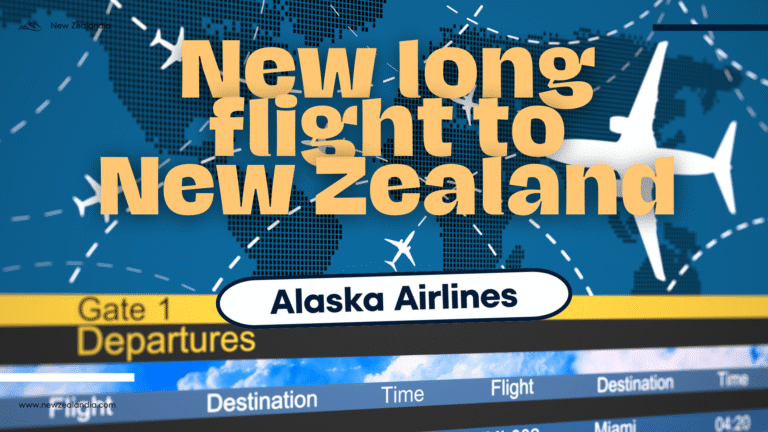New Zealand’s Brain Drain: Why Kiwis Are Leaving?
New Zealand consistently ranks among the world’s most desirable places to live. With its stunning landscapes, high quality of life, and reputation as a safe, stable nation, it seems like the perfect place to call home. Yet beneath this idyllic surface lies a troubling reality: New Zealand is experiencing a significant brain drain, with thousands of its citizens—particularly young, skilled workers—choosing to leave the country each year.
This exodus isn’t driven by dissatisfaction with New Zealand’s natural beauty or lifestyle. Instead, it’s a pragmatic response to economic realities that make it increasingly difficult for young Kiwis to build prosperous futures in their homeland. Understanding why this is happening requires examining several interconnected factors: the unique relationship with Australia, a severe housing crisis, and New Zealand’s distinctive economic structure.
The Australian Advantage: An Open Door to Opportunity
The primary catalyst for New Zealand’s brain drain is its close relationship with Australia. The two nations have agreements that allow for remarkably free movement of people, enabling New Zealanders to live, work, and access social services in Australia with minimal restrictions. This arrangement is arguably even more seamless than movement within the European Union, given that both countries share English as a first language and have remarkably similar cultures.
For ambitious young Kiwis, this creates an irresistible proposition. Australia’s economy is not only larger but also significantly more diverse, offering a broader spectrum of career opportunities that simply don’t exist in New Zealand’s more specialized market. Highly skilled professionals—whether they’re fine arts curators, high-end researchers, senior managers, or specialists in niche fields—often find far greater demand for their expertise in major Australian cities like Sydney, Melbourne, or Brisbane.
The educational pathway reinforces this migration pattern. Australia boasts a greater number of larger, more prestigious universities, and crucially, it treats New Zealand students as local residents for tuition purposes and student loans. This means young Kiwis can pursue their tertiary education in Australia without the financial barriers that would apply to other international students, making it natural for them to establish careers there after graduation.

The Housing Crisis: Pricing Out a Generation
Perhaps nothing illustrates New Zealand’s economic challenges more starkly than its housing crisis. Despite being a relatively small, remote nation at the bottom of the world, New Zealand has some of the most expensive real estate globally. This paradox makes it extraordinarily difficult for young Kiwis to purchase homes and establish themselves financially in their own country.
The government has attempted various interventions to deflate the overheated housing market, including banning foreign buyers. However, these measures have had limited impact. Foreign buyers constituted only about 3% of purchases before the ban was implemented, meaning the policy could never have been a silver bullet. Moreover, Australians—who represent the largest group of foreign buyers—were exempt from the ban due to existing bilateral agreements between the two countries.
Wealthy Australians continue to be drawn to New Zealand for holiday homes or retirement properties in scenic locations like Queenstown or Auckland. For them, New Zealand offers several advantages: prices that, while high, are often still lower than major Australian cities; spectacular natural beauty; and tax efficiencies such as the absence of stamp duty that exists in Australia. This ongoing demand from across the Tasman helps keep New Zealand property prices stubbornly elevated, even as local wages struggle to keep pace.
The result is a generation of young New Zealanders who look at their prospects and make a rational calculation: why struggle to afford a modest home in Auckland when they could earn significantly more in Sydney or Melbourne and potentially achieve homeownership sooner?

New Zealand’s Economic Reality: Small, Remote, and Specialized
To understand why New Zealand struggles to retain its talented workforce, we need to examine the country’s unique economic structure. New Zealand is characterized by its small population (just over 5 million) and extreme geographic remoteness—it’s one of the most isolated developed nations on Earth.
This remoteness creates fundamental economic challenges. Building globally competitive industries is difficult because many goods and services can be produced more cheaply and at larger scale in locations closer to major shipping lanes and population centers, particularly in Asia. Even in sectors like financial services, where physical location might seem less critical, cities like Singapore offer more integrated global hubs than Auckland can provide.
As a result, the industries that truly thrive in New Zealand are primarily those that must be there: tourism, local finance, local services, and regional maritime operations. While these sectors are important, they don’t provide the same diversity of career opportunities available in larger, more centrally located economies.
The Housing Economy
Remarkably, about half of New Zealand’s entire economic output is centered around the housing market—selling, renting, building, and financing homes. This heavy reliance on housing creates a problematic feedback loop: the economy depends on expensive housing, yet expensive housing drives away the young, productive workers the economy needs to thrive in other sectors.
Agriculture: Productive but Not Labor-Intensive
Agriculture stands out as New Zealand’s most successful export sector. The country leverages its fertile land, abundant water, and modern technology to produce valuable commodities, particularly for Asian markets. New Zealand’s agricultural productivity is unusually high for an advanced economy, and the sector plays a crucial role in the nation’s export earnings.
However, modern agriculture offers limited solutions to the brain drain problem. Today’s farms are highly mechanized and require relatively little human labor. Well-educated city dwellers with university degrees are not typically seeking agricultural work, meaning this productive sector doesn’t create the kinds of career opportunities that retain skilled professionals.
The Immigration Paradox: A Back Door to Australia
In an attempt to counter the outflow of skilled workers, New Zealand has relied heavily on immigration to fill labor gaps and support its aging population. This strategy has brought new workers and diversity to the country, but it has also created an unexpected problem.
Many first-generation immigrants, after going through the process of gaining residency or citizenship in New Zealand, subsequently move to Australia to pursue even greater opportunities. This pattern has given New Zealand an unfortunate reputation as a “back door” into major Australian cities—a stepping stone that provides relatively accessible residency in a developed nation, which then opens the door to Australia’s larger economy and labor market.
This means New Zealand is investing resources in attracting and integrating immigrants, only to see a significant portion of them move on to Australia once they’ve established themselves. The country ends up bearing the costs of immigration while Australia reaps many of the benefits.
Can the Trend Be Reversed?
Reversing New Zealand’s brain drain faces significant political and economic obstacles. Over 10% of New Zealand’s population currently lives in Australia, forming a substantial voting bloc that would likely oppose any policies restricting free movement between the two countries. The political will to fundamentally change the relationship with Australia simply doesn’t exist—nor would it necessarily be desirable, given the deep cultural and economic ties between the nations.
However, the situation isn’t entirely bleak. While the loss of young productive workers in their prime earning years hurts the economy, some eventually return later in their careers, bringing new skills, international experience, and capital that can benefit New Zealand. This “boomerang migration” means not all brain drain is permanent.
New Zealand’s government does have some room to maneuver. The country maintains a relatively low debt-to-GDP ratio compared to many developed nations, providing fiscal flexibility to implement policies that could make New Zealand more attractive to young workers. Potential solutions include:
- Creating better job opportunities through strategic industry development
- Implementing policies to genuinely reduce housing costs and increase affordability
- Investing in sectors that can compete globally despite geographic isolation
- Improving wages and working conditions to narrow the gap with Australia
- Leveraging technology to overcome the disadvantages of remoteness
The Enduring Appeal of Aotearoa
Despite these challenges, New Zealand’s inherent qualities remain powerful draws. As a safe, stable, clean, and extraordinarily picturesque country with strong institutions and a high quality of life, New Zealand will always attract people seeking these values. The country’s natural beauty, outdoor lifestyle, work-life balance, and tight-knit communities are assets that can’t be easily quantified in economic terms.
The key challenge for New Zealand’s policymakers is ensuring that these lifestyle advantages aren’t overwhelmed by economic disadvantages. Young Kiwis need to feel they can both enjoy their country’s natural gifts and build prosperous, financially secure futures without having to leave.
Whether New Zealand can achieve this balance will determine if it can stem the tide of its brain drain—or if the country will continue to serve as a training ground and launching pad for talent that ultimately enriches its larger neighbor across the Tasman Sea.
The brain drain facing New Zealand is complex, rooted in geography, economics, and international agreements. While there are no easy solutions, understanding these dynamics is the first step toward developing policies that can help young Kiwis see a future in their homeland—one that doesn’t require looking across the sea for opportunity.








